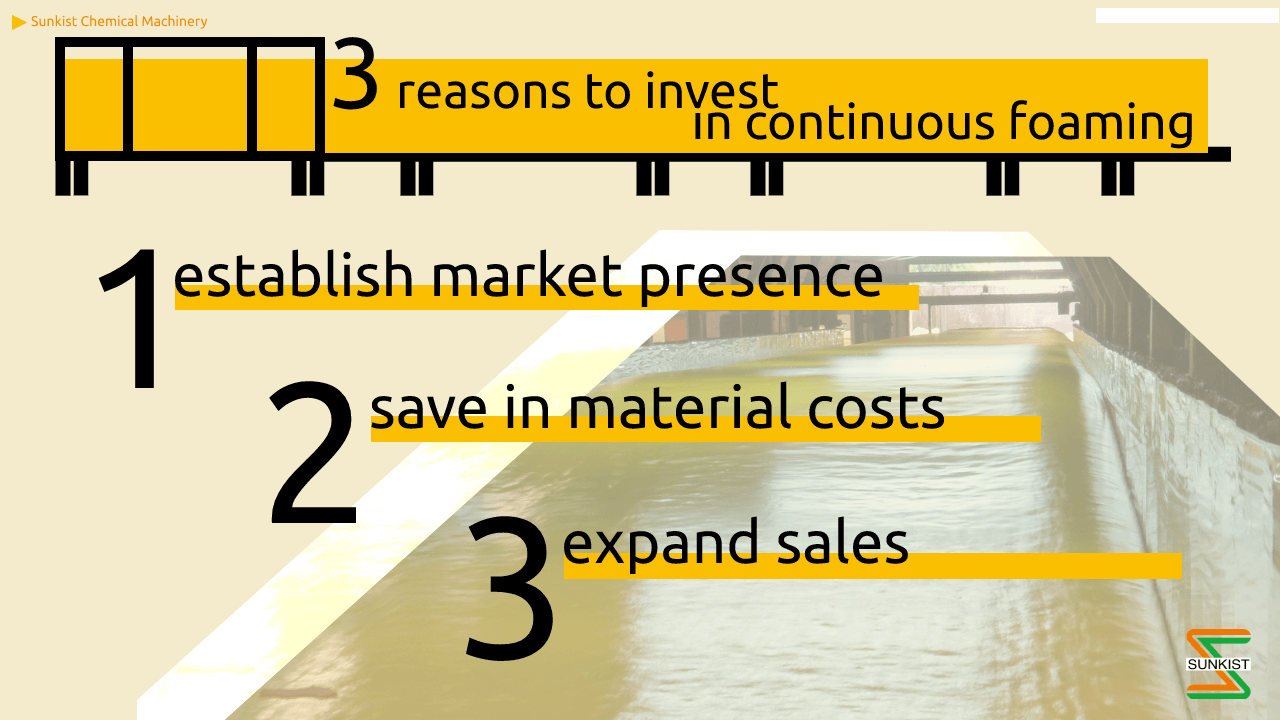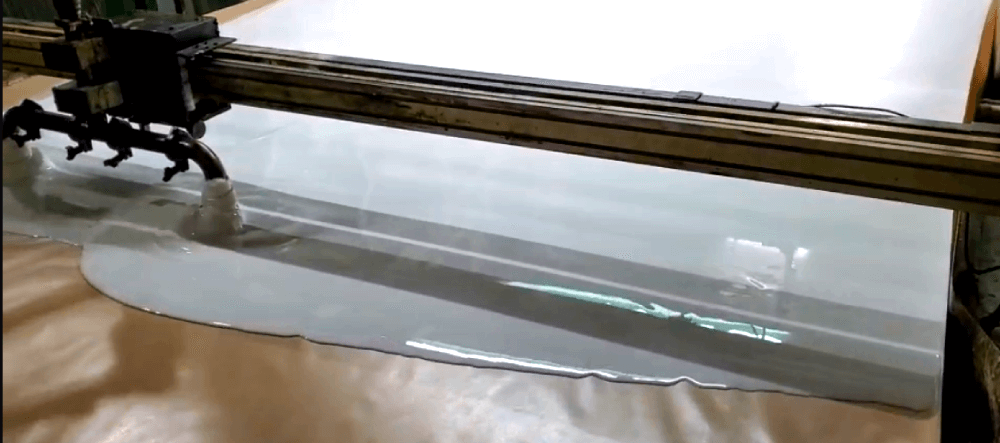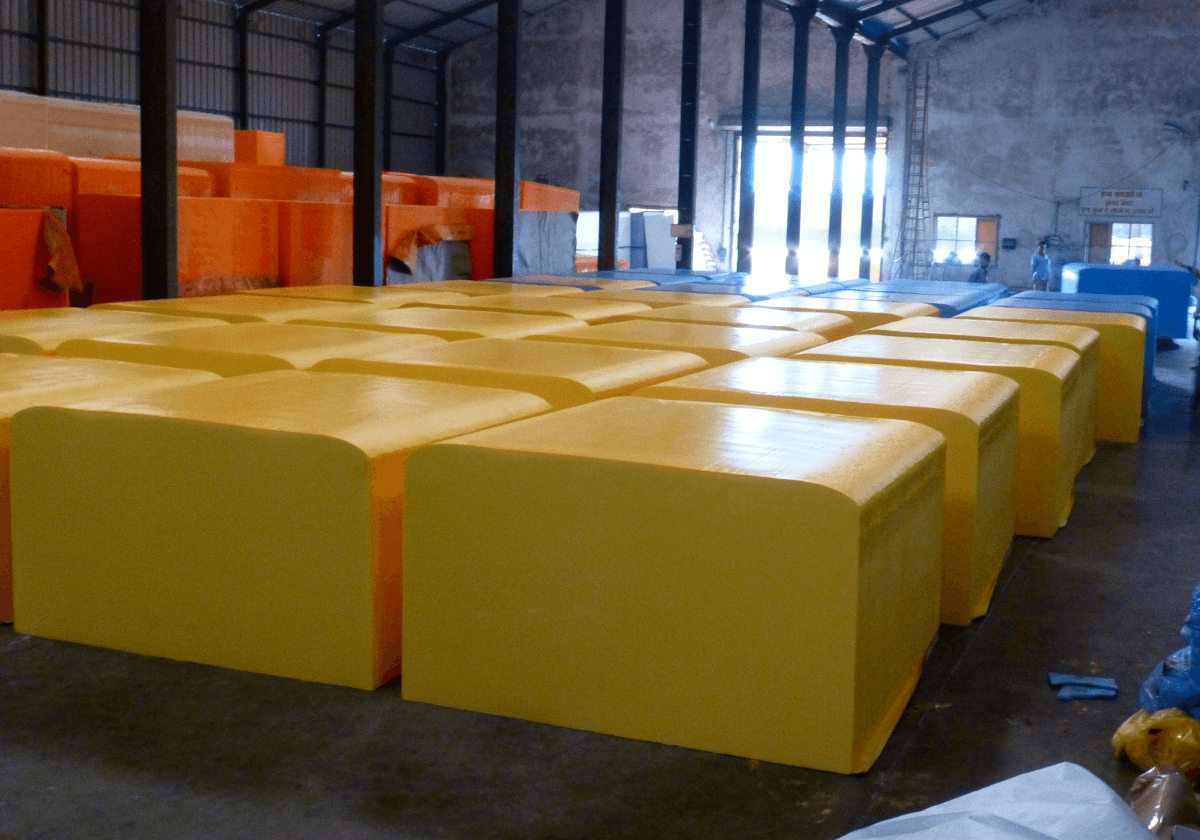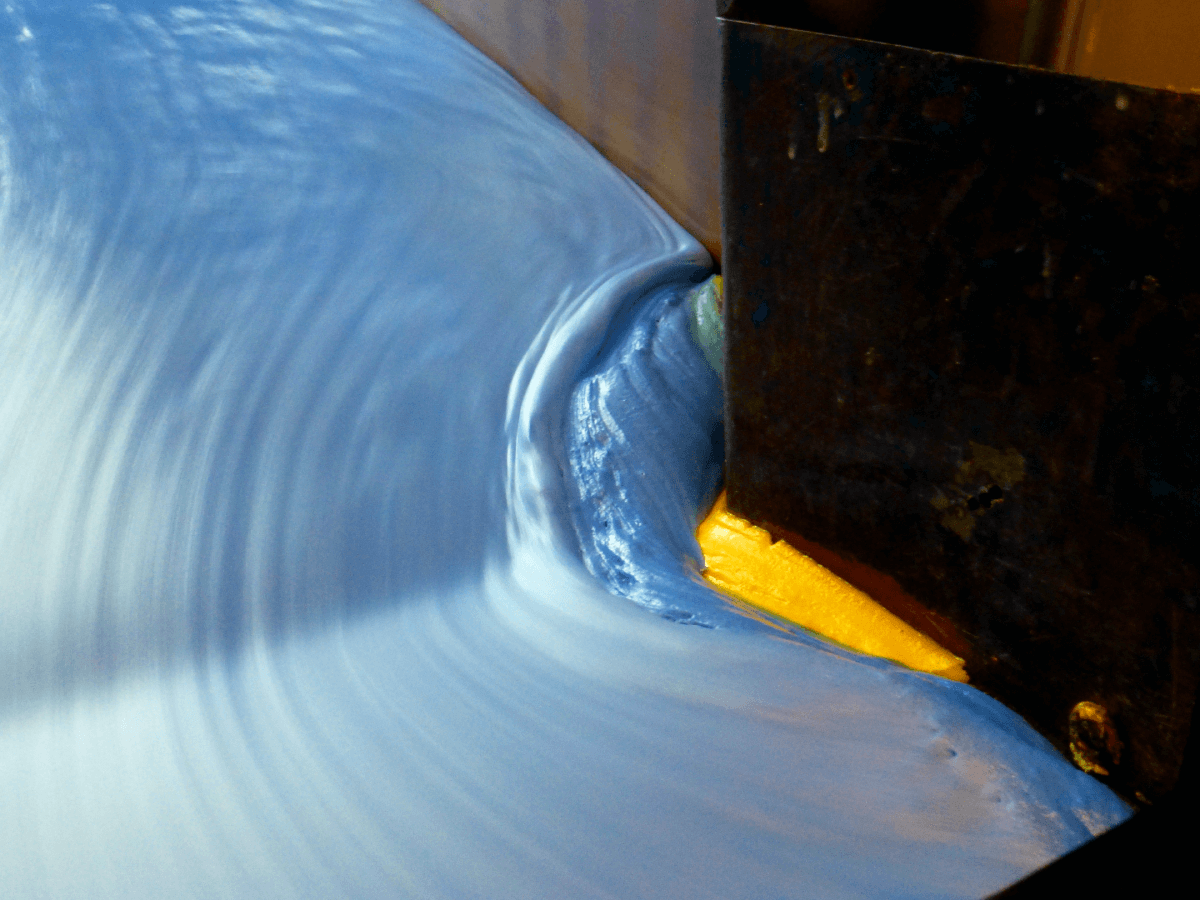(4.3 min read)
We’ve talked about why a plant might invest in batch foaming. What about continuous foaming?
The biggest reason people avoid investing in a continuous foaming set-up is, of course, the cost. Not only is a machine like the SA-1AF pretty pricey ($450k+), but you also have to have the space, accessories, and ancillary equipment to make sure your continuous foaming machine is running at peak efficiency. (Curious about what that looks like? Read about our Uganda case here.)
This article gives you three key benefits to consider, before investing in new foaming equipment.

1. A continuous foaming plant lets you establish a market presence.
Let’s paint a quick picture of the PU foam supply chain. We have foaming plants upstream, conversion plants midstream, and processing plants (for finished products) downstream. These are not discrete links in the chain, of course. One company can occupy one, two, or all three.
Foaming markets are also regionally bound by geographic limitations to shipping and handling. This means the first step in determining your own market presence is determining the size of the market that affects you. How many conversion plants do you supply, and who are your eminent competitors? Which conversion plants are linked to which processing plants, producing which end goods?
Do your competing foaming plants produce foam in batches? Do they have the space and capital to invest in continuous foaming machines of their own?

Are any nearby conversion plants planning to expand upstream? If so, not only might you lose a customer, you might also gain a competitor. Particularly, conversion plants building foaming facilities have the potential benefit of starting from scratch—in other words, they may not be trying to fit new machines into old facilities, and can invest in a highly efficient continuous line from the get-go.
(On the flip side, are you the conversion plant interested in expanding upstream?)
Once you’ve answered these questions, you can accurately gauge the potential benefits of a continuous foaming line. A continuous line is not the kind of capital investment that can be easily imitated, for two reasons:
- High Cost: the primary reason for your hesitation pre-purchase is now working for you. The expenses of a continuous foaming line sets a high barrier to entry for all your existing and potential competitors.
- Supply Dominance: once your foam floods your local market, competitors will have a much harder time justifying an investment in continuous foaming themselves, since you’ve occupied the majority of the demand. Which leads us to…
2. Producing foam in bulk saves on material cost.
As we’ve already mentioned, producing in bulk helps you establish market presence. With market presence comes opportunity for market expansion—the furniture industry, for example, is one where bulk foam production can give you a quick and strong foothold.
What else can producing in bulk do for you?
It can directly reduce your production costs.
Let’s talk about foam shrinkage for a second.

When fresh foam cures, it shrinks. This is due to chemical processes settling and gases escaping the open cells (read more about the chemistry of PU foaming here). The thing is, foam volume and surface area affects the degree of shrinkage. A 2x2x2 meter block will lose more foam volume during curing than a 4x2x2 block.
In short, the bigger the block left to cure, the less material is lost.
Now we’re talking about the large-scale storage systems you should put in place for your continuous foaming line. As in the Uganda case (linked above), don’t be short-sighted about storage. Even if you have a continuous machine, chopping your freshly foamed slabstock into batch-sized blocks literally costs you.
Consult Sunkist for the ideal plant layout today.
3. Higher quality foam means more sales opportunities.
Batch foam and continuous foam not only majorly differ in quantity, but also in quality.
Is there a reachable automaker, apparel, or shoes market that you can expand into?

One of the biggest differences between batch and continuous foam is the presence of pinholes, which are the product of uneven bubbling inside the polyurethane mixture during foaming (learn more about PU foaming chemistry). The physics of a continuous foaming machine’s mixing head plus liquid lay-down system makes the polyurethane liquid more homogenous and ensures that air distribution throughout the foaming process is as even as possible. Meanwhile, batch foaming box molds mean a distinct disadvantage when it comes to even liquid distribution.
Continuous slabstock has less pinholes and batch foam has more. The implication for sales is major, since specialty foam for car interiors or shoes and apparel padding begins with a smooth surface for lamination. This is typically a nonissue for mattress foam, but without a smooth foam surface, adhesives of all sorts have a harder time bonding the foam and the laminate.
Meaning, if you can produce continuous slabstock, you may expand new horizons for your sales and distribution.
Summary
A complete continuous foaming plant–including a foaming machine, a cutting attachment, and an integrated storage rack system–is a daunting, but completely worthwhile investment. It allows you to establish your market presence, produce in bulk at exponential speeds, and enter new markets you may not have had access to before. All three reasons can be boiled down to one simple method for success: save on long-term costs with smart investments, then reap the profits upon the establishment of a sustainable infrastructure for financial success.
